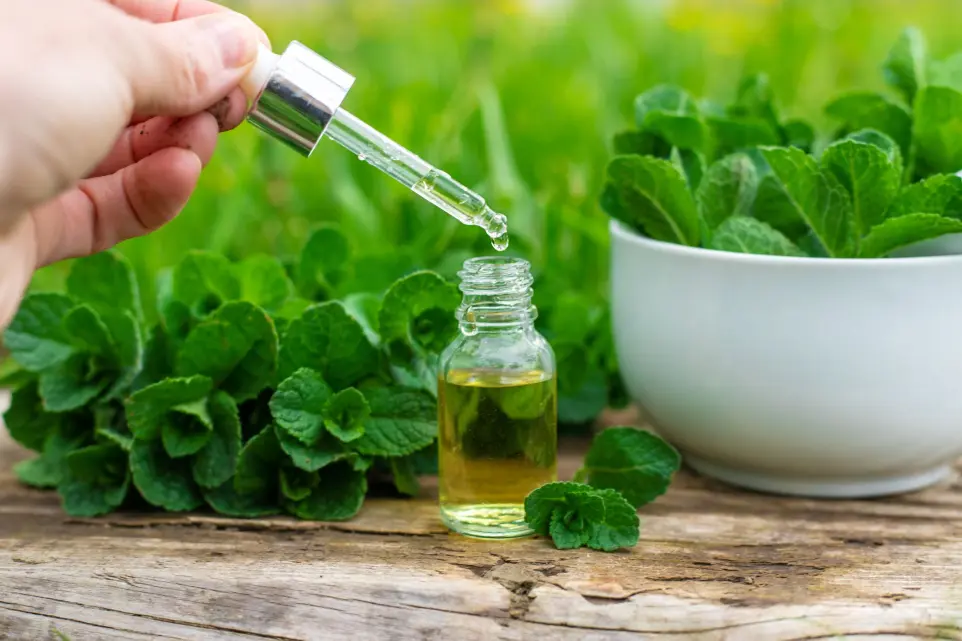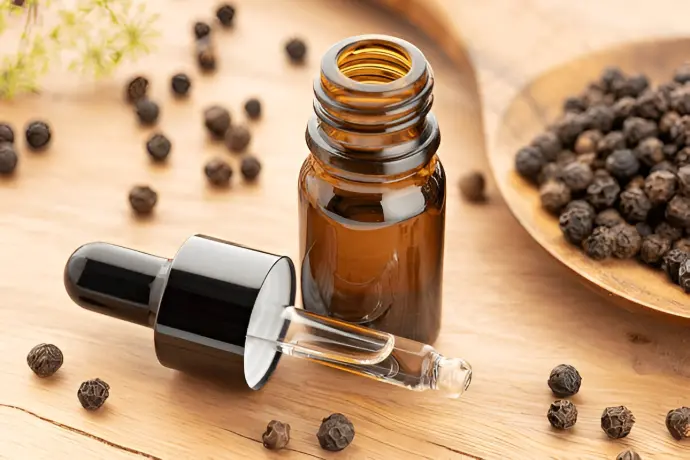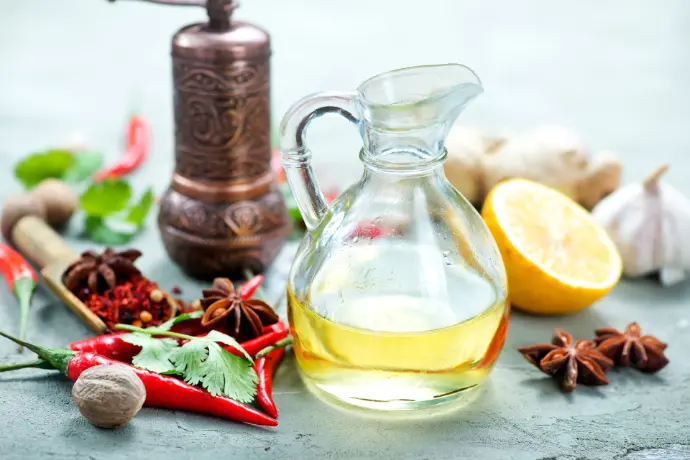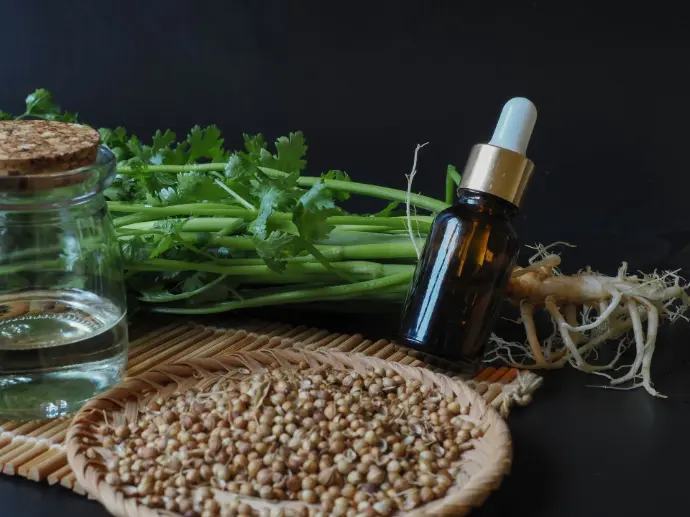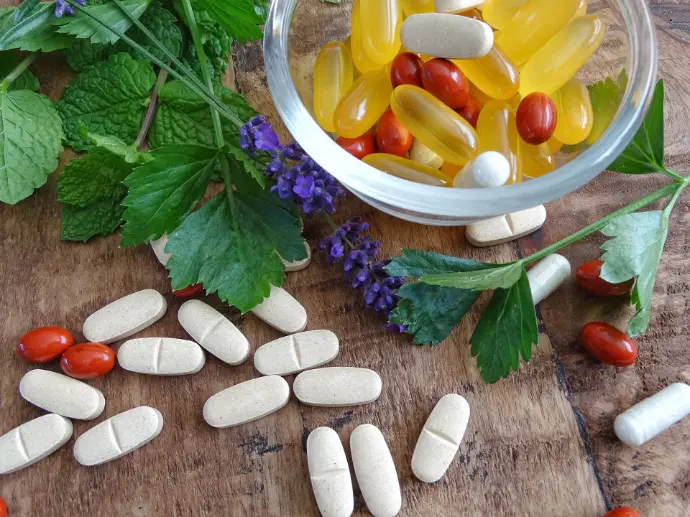About Product
Peppermint Oil, extracted from the leaves of Mentha × piperita, is a pale yellow to greenish essential oil with a refreshing, sharp, and cooling aroma that instantly awakens the senses. A natural hybrid of water mint (Mentha aquatica) and spearmint (Mentha spicata), peppermint oil is celebrated worldwide for its bold menthol-rich scent and its wide-ranging applications in flavoring, therapeutics, personal care, and aromatherapy.
The oil is primarily composed of menthol, menthone, 1,8-cineole, isomenthone, and limonene, with menthol being the dominant compound responsible for its intense cooling effect and soothing sensation. These components give peppermint oil its potent analgesic, antispasmodic, anti-inflammatory, and antimicrobial properties, making it a valuable natural remedy in both traditional and modern healthcare systems.
In the food and beverage industry, peppermint oil is widely used to flavor confectionery, chewing gum, chocolates, liqueurs, teas, ice creams, and syrups, imparting a fresh, sweet, and cooling taste that lingers on the palate. It is also used as a natural preservative and flavor enhancer in toothpastes, mouthwashes, and chewing gums due to its germicidal and refreshing properties.
In pharmaceutical formulations, peppermint oil serves as an effective agent for relieving headaches, indigestion, irritable bowel syndrome (IBS), cold symptoms, and minor muscle pains. Its cooling and anti-inflammatory action helps in relieving sinus pressure, nausea, and motion sickness. It is a common ingredient in digestive capsules, nasal rubs, pain balms, and cough syrups, where it works both as a functional ingredient and a flavoring agent.
The cosmetic and personal care industry utilizes peppermint oil for its invigorating fragrance, antibacterial qualities, and scalp stimulation properties. It is commonly added to shampoos, hair oils, lip balms, soaps, lotions, foot creams, and facial cleansers. It helps in reducing skin redness, controlling oil, and providing a cooling effect, which makes it especially suitable for products aimed at oily or acne-prone skin.
In aromatherapy, peppermint oil is considered a mental stimulant that improves focus, reduces mental fatigue, and boosts energy levels. When diffused or inhaled, it provides a refreshing environment that helps alleviate stress, headaches, and exhaustion. Its combination of sensory and therapeutic effects makes it one of the most versatile essential oils in aromatherapy practices.
Overall, peppermint oil is a multi-functional essential oil known not only for its signature cooling flavor and aroma but also for its robust therapeutic profile. Whether used in culinary applications, medicinal preparations, personal care formulations, or wellness routines, it continues to be a powerful and reliable botanical oil with global appeal.
Composition
- Menthol: The primary active compound responsible for the cooling sensation and the signature minty aroma.
- Menthone: A secondary compound that contributes to peppermint's fresh, minty scent.
- Other Components: Isomenthone, menthyl acetate, limonene, and pulegone that enhance its flavor and therapeutic properties.
Physical Characteristics
- Appearance: Colorless to pale yellow liquid.
- Odor: Fresh, sharp, and minty with a cooling, invigorating fragrance.
- Taste: Cool, minty, slightly sweet.
Health Benefits
Pain Relief & Analgesic:
o The menthol in peppermint oil provides a cooling effect, which can relieve headaches, muscle pain, and joint pain.
Anti-inflammatory:
o Peppermint oil reduces inflammation, making it useful for treating inflammatory conditions like arthritis and skin irritations.
Respiratory Health:
o Helps clear nasal passages and relieve symptoms of sinus congestion, coughs, and colds.
Digestive Health:
o Soothes the stomach, alleviates bloating, reduces indigestion, and relieves nausea.
Antibacterial & Antifungal:
o Exhibits strong antibacterial and antifungal properties, making it effective in treating skin infections and promoting healthy skin.
Oral Health:
o Freshens breath and promotes oral hygiene with its antimicrobial properties, often used in toothpaste and mouthwashes.
Key Features
- Source: Derived from the leaves and stems of the Mentha × piperita plant (peppermint).
- Active Ingredients: Menthol, menthone, menthyl acetate, and other essential oils.
- Physical Characteristics: Colorless to pale yellow liquid with a sharp, minty aroma.
- Applications: Used in food, beverages, pharmaceuticals, cosmetics, and fragrance.
- Health Benefits: Pain relief, anti-inflammatory, respiratory health, digestive support, oral hygiene.
Application
Food & Beverage:
- Flavoring Agent: Adds a refreshing, cool, and minty flavor to candies, chewing gum, beverages, and baked goods.
- Preservative: Due to its antimicrobial properties, peppermint oil is sometimes used as a natural preservative in food products.
Pharmaceuticals:
- Pain Relief: Used in topical creams, ointments, and balms for headaches, muscle pain, nd joint pain relief.
- Digestive Health: Used to soothe digestive issues, including bloating, indigestion, and nausea.
- Respiratory Health: Helps clear nasal congestion and provides relief from sinus issues through its decongestant properties.
Cosmetics & Personal Care:
- Skincare: Known for its cooling, soothing effects, peppermint oil is used in skincare products to calm irritated skin and reduce inflammation.
- Haircare: Promotes scalp health and stimulates hair growth. Often included in shampoos and conditioners for dandruff prevention.
Fragrance Industry:
- Used in Perfumes and Air Fresheners: Peppermint oil is added to create fresh, minty fragrances for perfumes, candles, and air fresheners.
